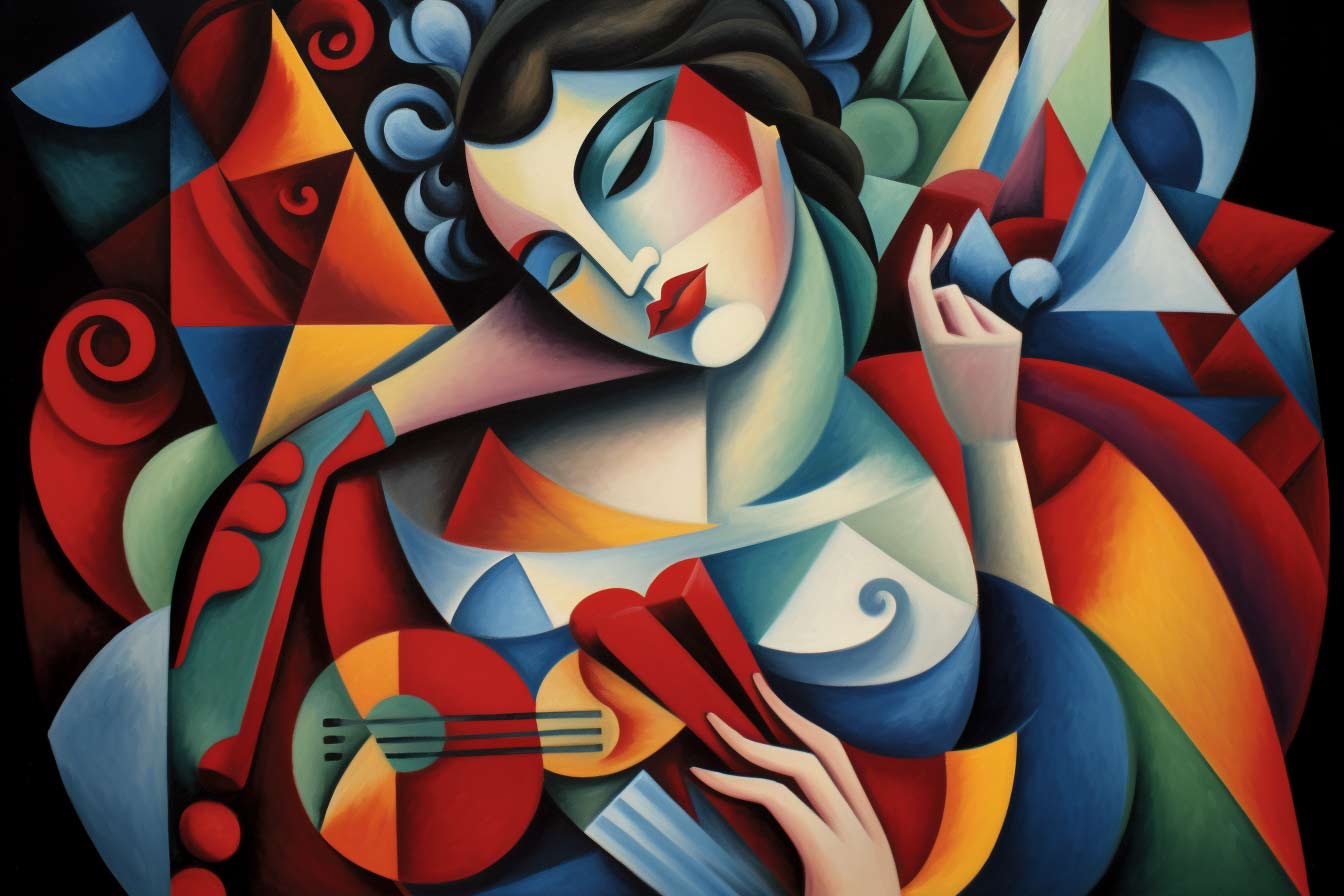Jean Metzinger: Reflections & Refractions in Cubist Realms
In the golden embrace of 1883, Nantes, a city bathed in the glory of France’s historical tapestry, bore witness to the birth of Jean Metzinger. With his very first breaths, he seemed to be attuned to the subtle symphonies of the world around him. As he matured, so did his vision, poised to play a pivotal role in the ever-evolving stage of modern art.
From his formative years, it was evident that Metzinger was destined for a realm beyond the ordinary. The alluring city of Paris, the heart of artistic pulsations, beckoned, and young Metzinger heeded its call. Here, amidst the vivacious cacophony of Montparnasse, he found his true calling in the arms of Cubism.
However, Metzinger’s Cubism was not mere mimicry of fragmented reality. He, along with his contemporaries, sought to delve deeper, to understand the very essence of form and colour, and represent them in a symphony of interconnected geometries. This led to his own unique rendition of Cubism, where the objective reality seemed to blend seamlessly with subjective interpretations.
In the vast canvas of his artistic contributions, ten masterpieces stand as monumental testaments to Metzinger’s vision:
- “Tea Time (Woman with a Teaspoon)” (1911) – A harmonious dissection of leisure, showcasing a lady in thoughtful repose amidst the ritual of tea.
- “Dancer in a Café” (1912) – An evocative portrayal of movement, capturing the ephemeral essence of dance amidst the angular geometries of a café.
- “The Cyclist” (1912) – A vibrant tribute to motion, encapsulating the fervour of a cyclist in the throes of his journey.
- “Woman with a Horse” (1911-12) – A tender ode to the bond between human and beast, rendered in fragmented yet emotive contours.
- “Nude” (1910) – A bold foray into the human form, where the sensuality of the figure is juxtaposed against the abstract language of Cubism.
- “Portrait of Albert Gleizes” (1911) – A homage to his contemporary, this piece is a mosaic of admiration and artistic camaraderie.
- “Landscape” (1912) – A reimagined vision of nature, where the serenity of the scene is presented through interconnected geometries.
- “Two Nudes” (1910-11) – A celebration of the feminine, where two figures find expression amidst a sea of fragmented forms.
- “La Plume Jaune” (1919) – A later work, portraying the intimate dance of colour and form, converging in harmonious chaos.
- “At the Cycle-Race Track” (1912) – Capturing the thrill of sport, this work throbs with energy and dynamism.
Metzinger’s brush was not just limited to painting; his intellect too played its part. Together with Albert Gleizes, he penned “Du Cubisme”, a treatise that sought to encapsulate the philosophy and essence of Cubism.
Yet, while Metzinger’s life was indeed a tale of brilliance, another luminary, Robert Delaunay, painted his own legacy. Born in Paris in 1885, Delaunay’s journey was intrinsically tied to the essence of colour. While the angular geometries of Cubism fascinated him, it was the rhythm and symphony of hues that truly captured his essence. His art was a dance of ‘Orphism’, where colours played in harmonious concert. Alongside his brilliant wife, Sonia, Delaunay ventured into realms where art became a living entity, throbbing with life. Alas, in 1941, the curtains fell on his illustrious journey.
As the hues of history continue to blend, the legacies of both Jean Metzinger and Robert Delaunay stand as vibrant patches in the grand tapestry of art, their brilliance undiminished by the sands of time.

